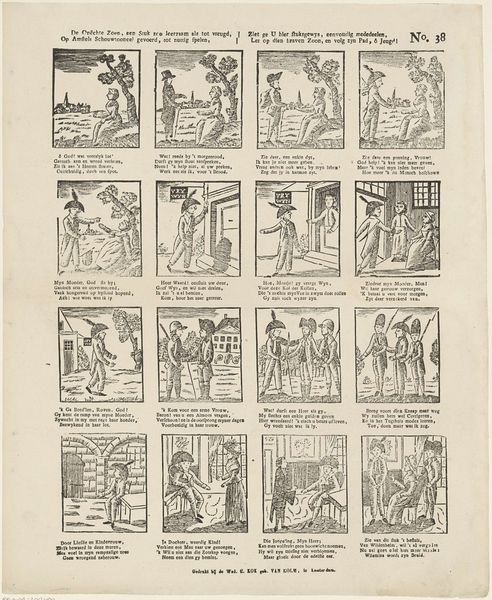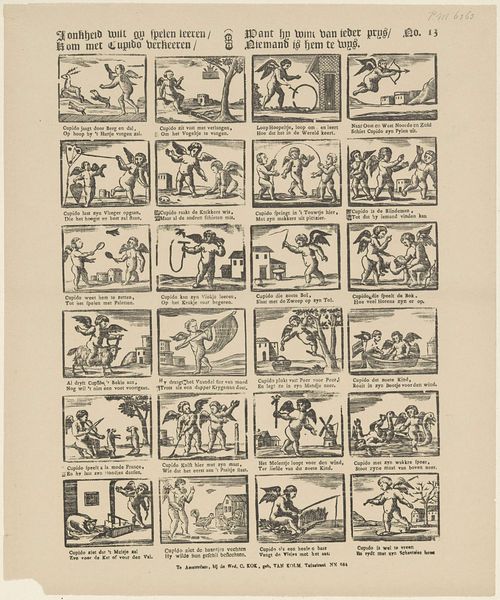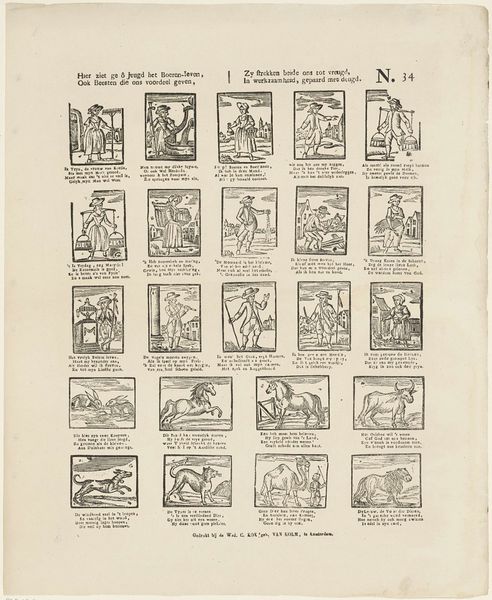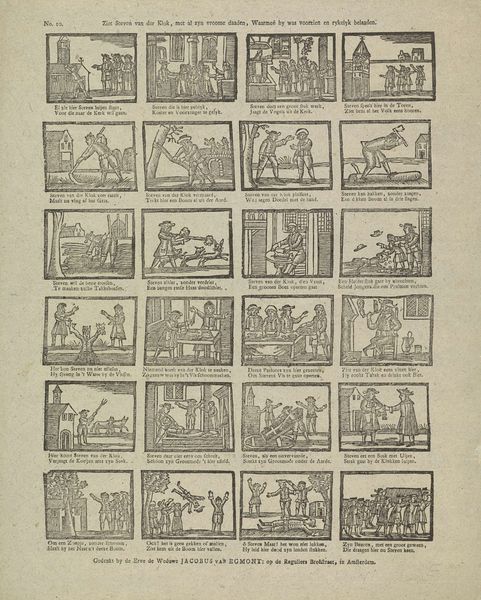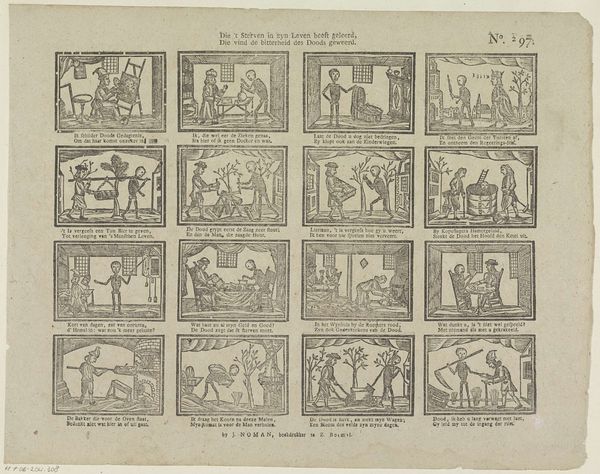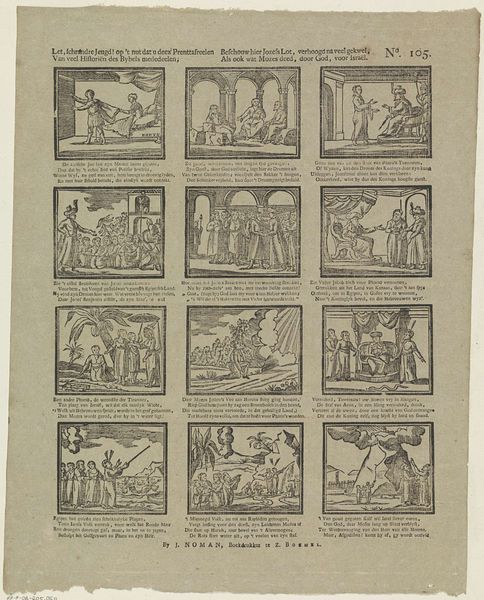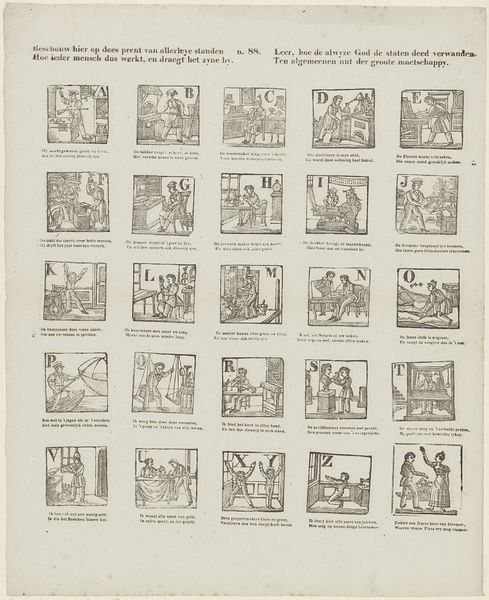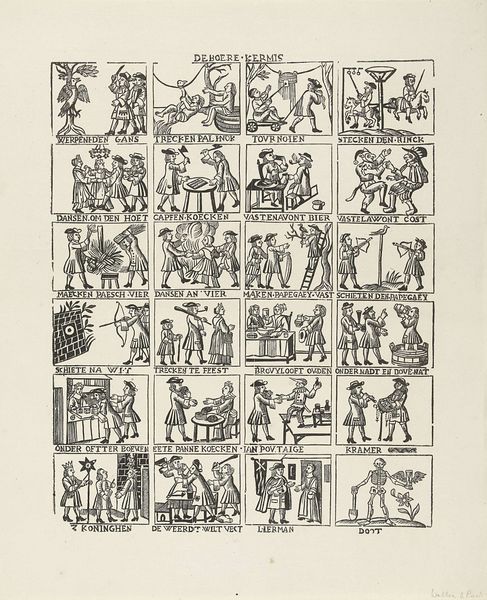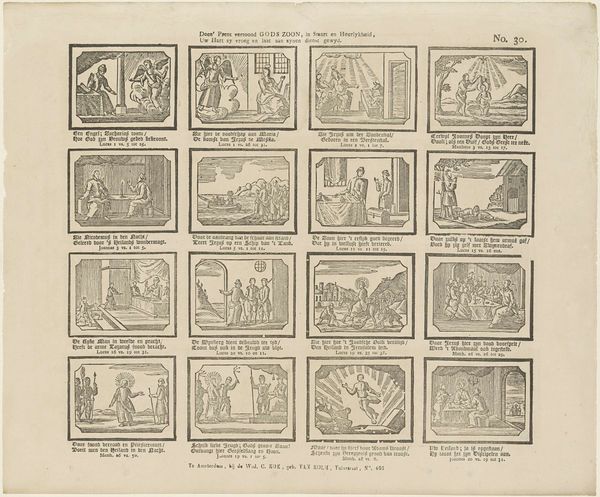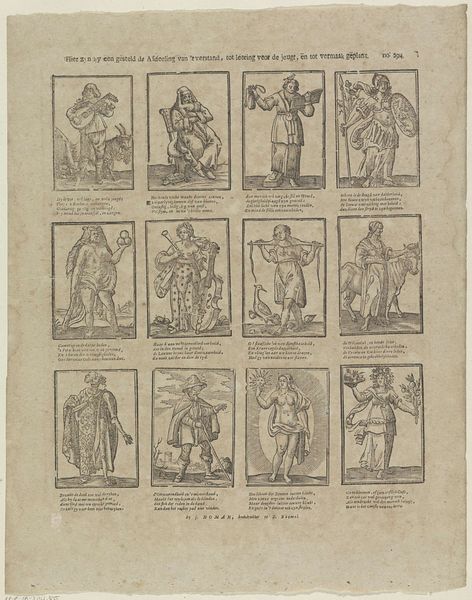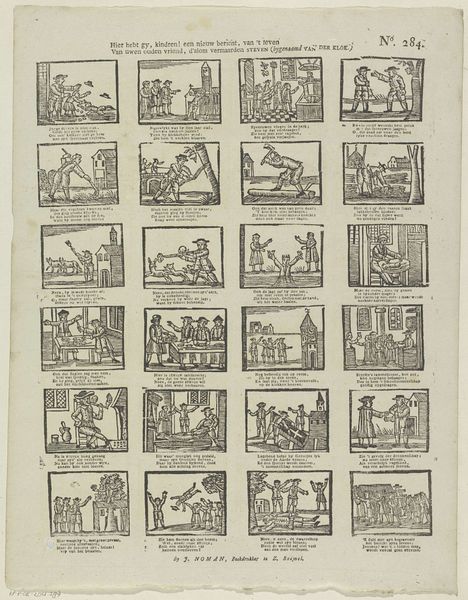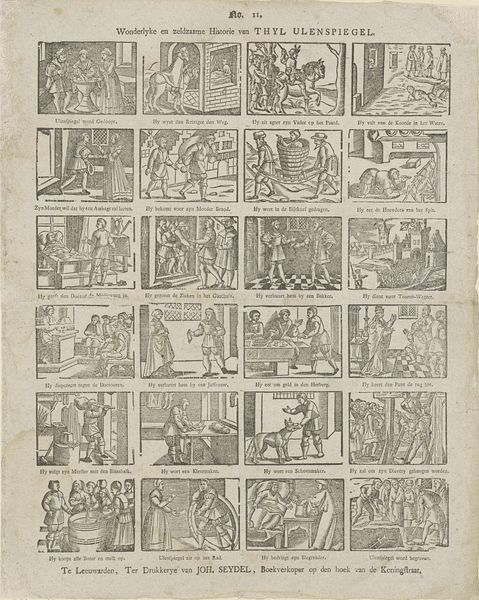
Die 's lands geluk en roem beoogt, / Heeft reeds zyn waerde als mensch verhoogd 1856 - 1900
0:00
0:00
print, engraving
#
narrative-art
# print
#
history-painting
#
engraving
Dimensions: height 356 mm, width 315 mm
Copyright: Rijks Museum: Open Domain
Editor: This is a print called "Die 's lands geluk en roem beoogt, / Heeft reeds zyn waerde als mensch verhoogd" by Glenisson & Zonen, made sometime between 1856 and 1900. It’s an engraving showing small scenes with soldiers. What really strikes me is how sequential and narrative it is; it's almost like a comic strip about military life. How would you interpret this work? Curator: It's a fascinating piece, especially when we consider its context. The rigid social structures and nationalistic fervor of the 19th century shaped such narratives. What we see here is not just a depiction of military life, but a visual argument for patriotic duty. The text reinforces the idea that service elevates one's worth, doesn’t it? Editor: It does. So, it’s promoting military service as a way to gain social status, even? Curator: Exactly. It's a form of propaganda, intertwining individual identity with national identity. Consider the lack of diversity. Who is deemed worthy of this elevation? Whose stories are absent? The print normalizes a very specific image of ideal citizenship, rooted in power structures. Editor: That makes a lot of sense. I hadn’t really considered the question of who *isn't* represented. Curator: These exclusions are never accidental. They reveal the biases and power dynamics inherent in the artwork's creation and consumption. The 'glory' being depicted comes at the cost of marginalizing others. Editor: This has really changed how I see it. Now I notice how the scenes are very idealized and sanitized. Curator: Yes! Seeing the artwork through a critical lens allows us to recognize its role in perpetuating social norms and nationalistic ideals. Editor: I’ll definitely look at art from this period with more skepticism. Curator: And that’s exactly the point – engaging with art critically to understand its impact on society.
Comments
No comments
Be the first to comment and join the conversation on the ultimate creative platform.

